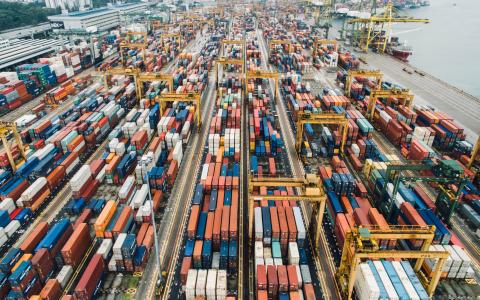
(Yahoo! Finance) - Kamala Harris and Donald Trump both are aiming to be the candidate of manufacturing, but this week, they are offering radically different pictures of the state of that industry while promising to help in nearly opposite ways.
Vice President Harris will speak Wednesday before the Economic Club of Pittsburgh where, according to a senior Harris campaign official, she will unveil a third plank of her "opportunity economy" agenda focused on spurring new factories.
The plans she will discuss are set to lean heavily on using government incentives to spur the manufacturing sector, with new proposals promised in the afternoon speech that will outline sectors she would prioritize for further manufacturing expansion if she wins this November.
Harris is also set to tout a flurry of manufacturing activity in recent years under the Biden-Harris administration and cast her plans as a way to continue that upward trend.
A series of recent government efforts, from the Bipartisan Infrastructure Law to new green energy incentives to the CHIPS and Science Act focused on semiconductors, contributed to a more than threefold increase in new US factory construction in recent years.
Former President Trump, by contrast, painted a darker portrait of the state of manufacturing and offered a different approach in a speech Tuesday. In that address, he focused on using new protective tariffs alongside other measures like lower corporate taxes and fewer regulations as a means to spur factory building.
"With the vision I'm outlining today, not only will we stop our businesses from leaving for foreign lands, but under my leadership, we are going to take other countries' jobs," Trump promised the crowd in Savannah, Ga.
He also called recent years a "horror show" for manufacturing but ignored the boom in factory construction — a metric that was largely flat during his four years in office.
He focused instead on specific examples of increasing foreign footprints among well-known companies like GE (GE) and IBM (IBM) as well as the possible sale of US Steel (X) to Nippon Steel in Japan.
But, at least in the case of the proposed sale of US Steel, company officials on both sides of that possible acquisition said they wouldn't move additional steel manufacturing overseas if the deal is approved in the coming months.
President Biden has also announced his opposition to the US Steel deal and that his administration is reportedly looking to block it, but it remains to be seen if he will act before November's election.
A Harris plan to build on Biden's policies
Underlying the focus from Harris and Trump this week is a recent campaign trail trend that has seen Harris make significant gains among voters on the issue of the overall economy since taking the Democratic mantle from President Joe Biden this summer.
Harris and her campaign are hoping to use this week's speech to further a trend that has seen her tied at 46% on economic issues in a recent Morning Consult poll and ahead in Financial Times polls in both August and September.
Other polls have her close behind Trump on economic issues nationally and in key swing states.
The overall goal of the speech, according to Harris, will be "really to outline my vision for the economy." It will also touch on her other recently announced plans — including one for small businesses and another around the cost of living.
Harris also recently told reporters that the speech would touch on care economy themes where she has recently outlined priorities there — such as capping childcare costs at 7% of working families' incomes — but without a detailed plan of how she would accomplish that.
But for this week's speech, much of the focus is expected to be on manufacturing.
The speech will lean heavily on her biography and also describe her economic philosophy as "pragmatic," according to the senior Harris official granted anonymity to outline an address that is still being finalized.
The speech is clearly intended to reach out to the business community and, the official added, will be a vision focused on "practical, realistic solutions."
Whether it helps her with the millions of manufacturing-minded voters in swing states remains to be seen, and the success of the message could perhaps hinge on which vision of the manufacturing sector voters believe.
Will the idea of a "horror show" espoused by Trump resonate with voters? Or can Harris convince them that this aspect of Biden's largely unpopular economic agenda is one to embrace?
The number of manufacturing jobs did grow under Trump in the years before the COVID-19 pandemic. But those economic disruptions led to the loss of over 1 million manufacturing jobs, according to government data.
Those jobs have now returned, and currently, more Americans work in manufacturing than at any time since the end of the George W. Bush administration. But it's still a far cry from the heyday of manufacturing decades prior.
By Ben Werschkul - Washington Correspondent



